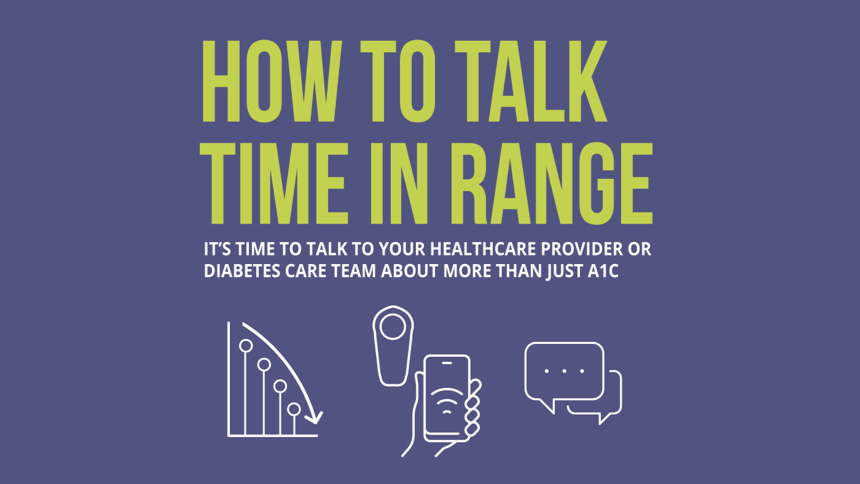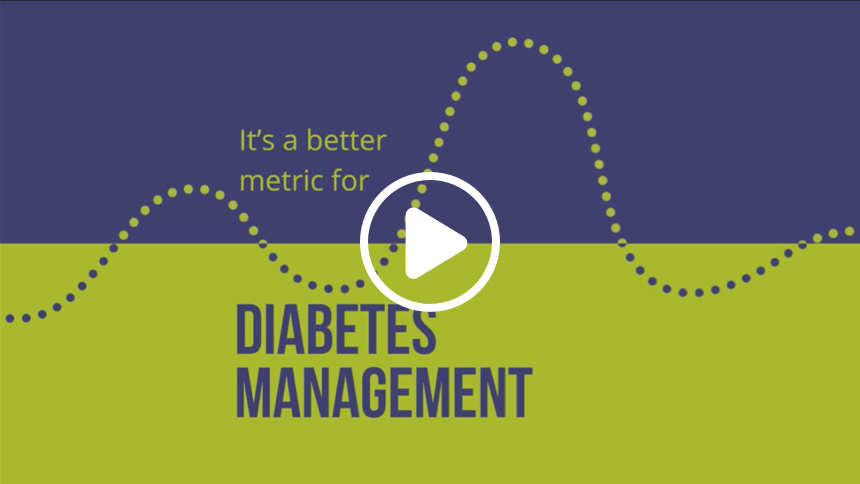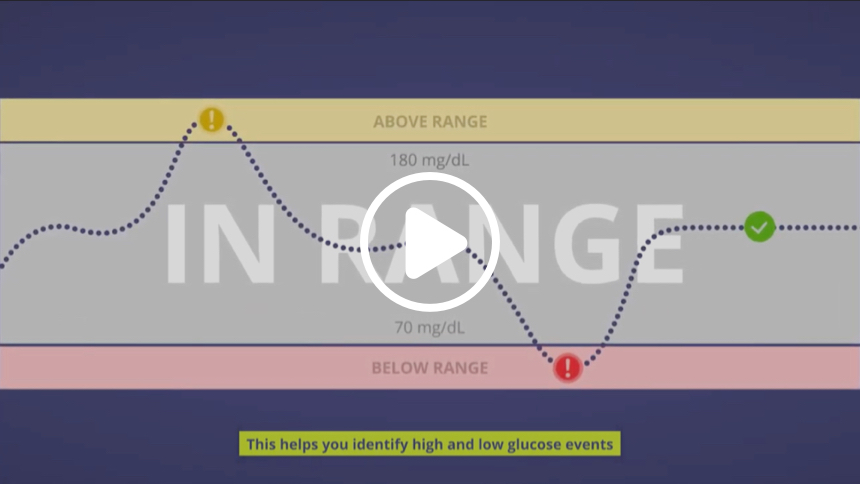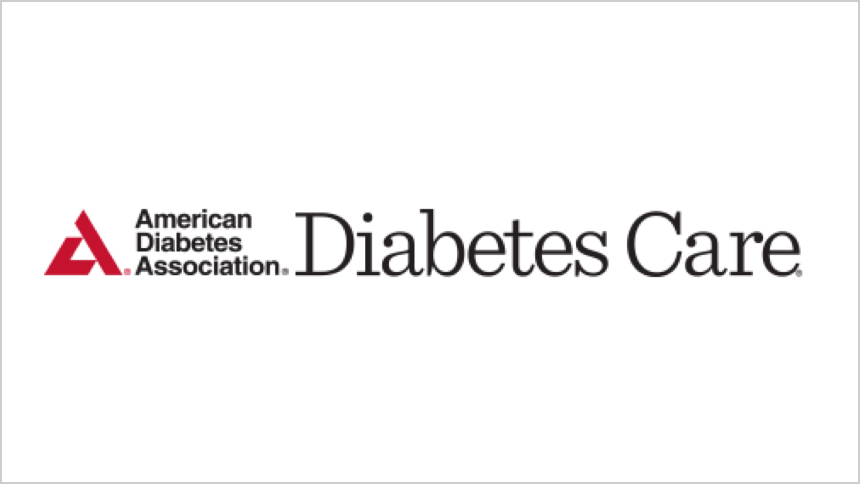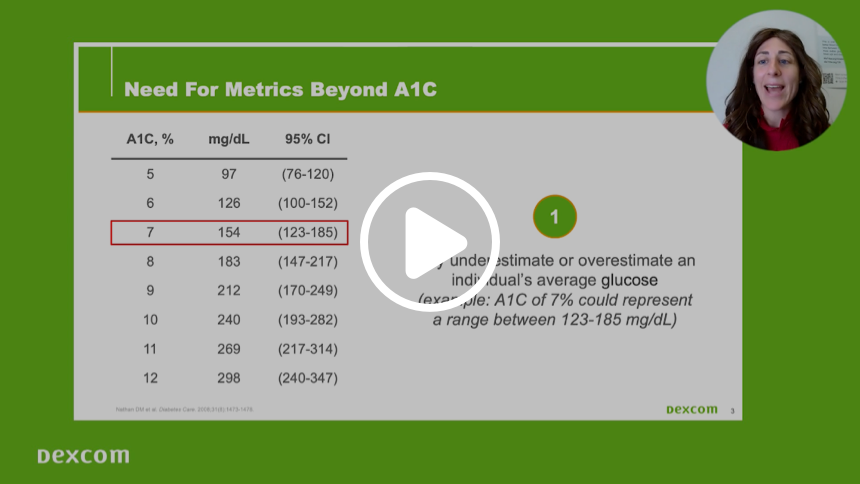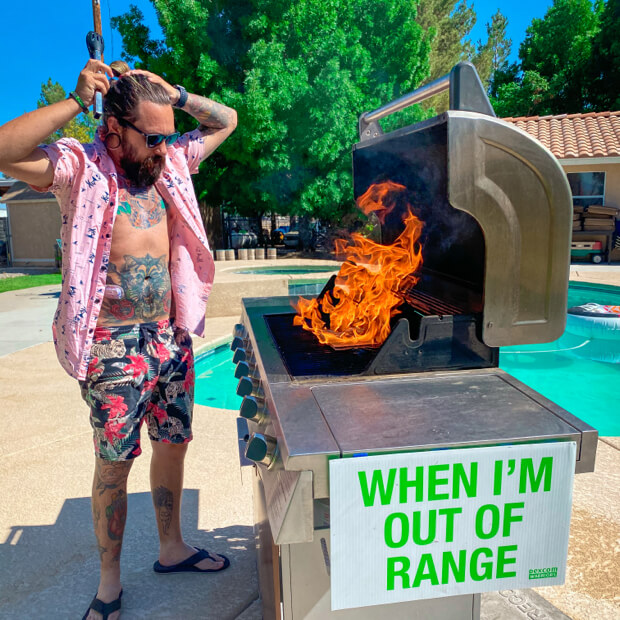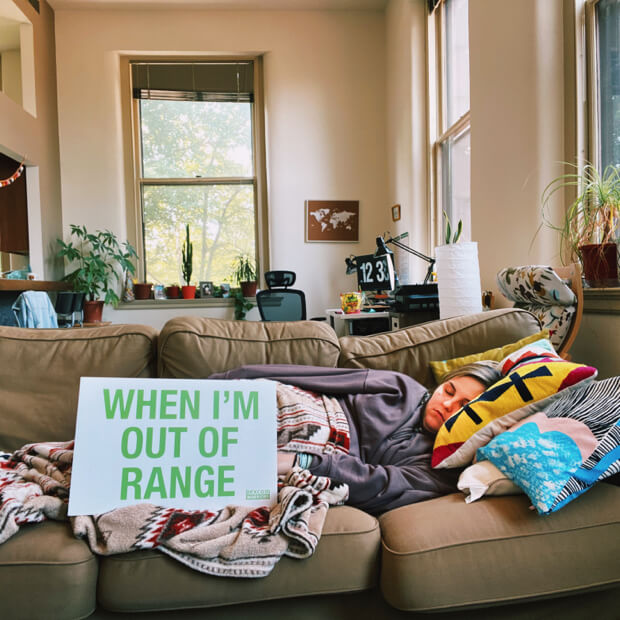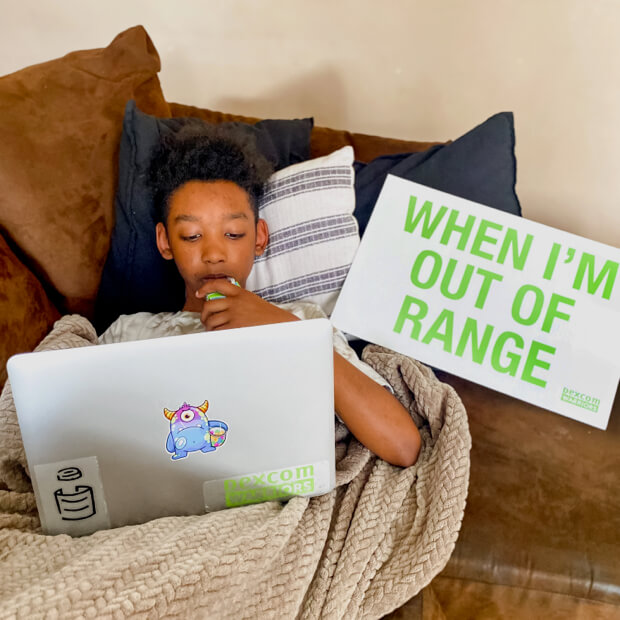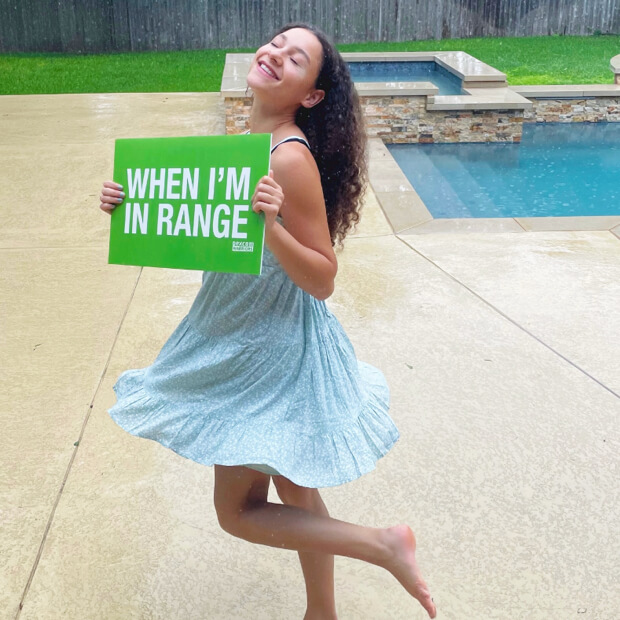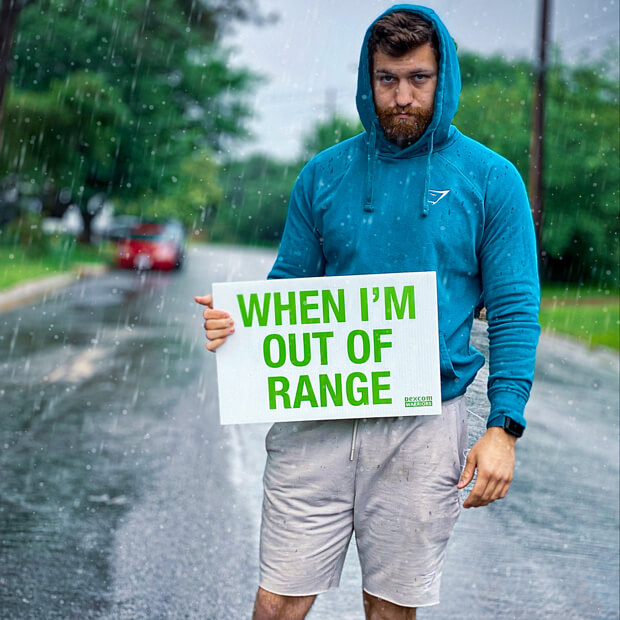Too many people with diabetes are still unaware of modern diabetes metrics, such as time in range.
We want to change that.
We believe everyone living with diabetes and their healthcare providers should embrace and adopt time in range for better diabetes management.
Join the Movement

The more time people with diabetes spend in their target range, the better and healthier they feel1
And yet a vast majority of people with insulin-treated diabetes said they do not use time in range as a metric to gauge treatment success.1
In fact, nearly half of people with insulin-treated diabetes said they are unaware of what time in range is1
And more than half said they have never discussed time in range with their healthcare provider1
What is Time in Range?
Time in range is the percentage of time spent with glucose levels in a target range.

Above Range
When a person’s glucose levels are too high, they can feel thirsty, get headaches, experience blurred vision and are at risk of DKA, which can lead to diabetic coma.2
Below Range
When a person’s glucose levels are too low, they can feel hungry, shaky, or anxious and are at risk of a severe hypoglycemic event.2
In Range
When a person’s glucose levels are in target range, they can feel healthier, more energetic and alert – they can do more and live their best life.1
- Glucose level
The International Consensus on Time in Range recommends people with diabetes should try to keep their glucose levels within a target range of 70-180 mg/dL at least 70% of the time. Consult with your doctor to determine your individual target range.
A1C has limitations
Time in range is a powerful supplement to A1C because it shows a more complete picture of changes in glucose levels. Since A1C is a three-month average, it doesn’t give insight into potentially dangerous high and low glucose variations.
A1C of 7%40% time in range
A1C of 7%100% time in range
Both of these people have what’s considered a healthy A1C of 7%, but by using time in range it becomes clear one person has much better glucose control than the other.
Time in Range Education Starts Here
Join the Time in Range Conversation
Track Your Time In Range With Continuous Glucose Monitoring
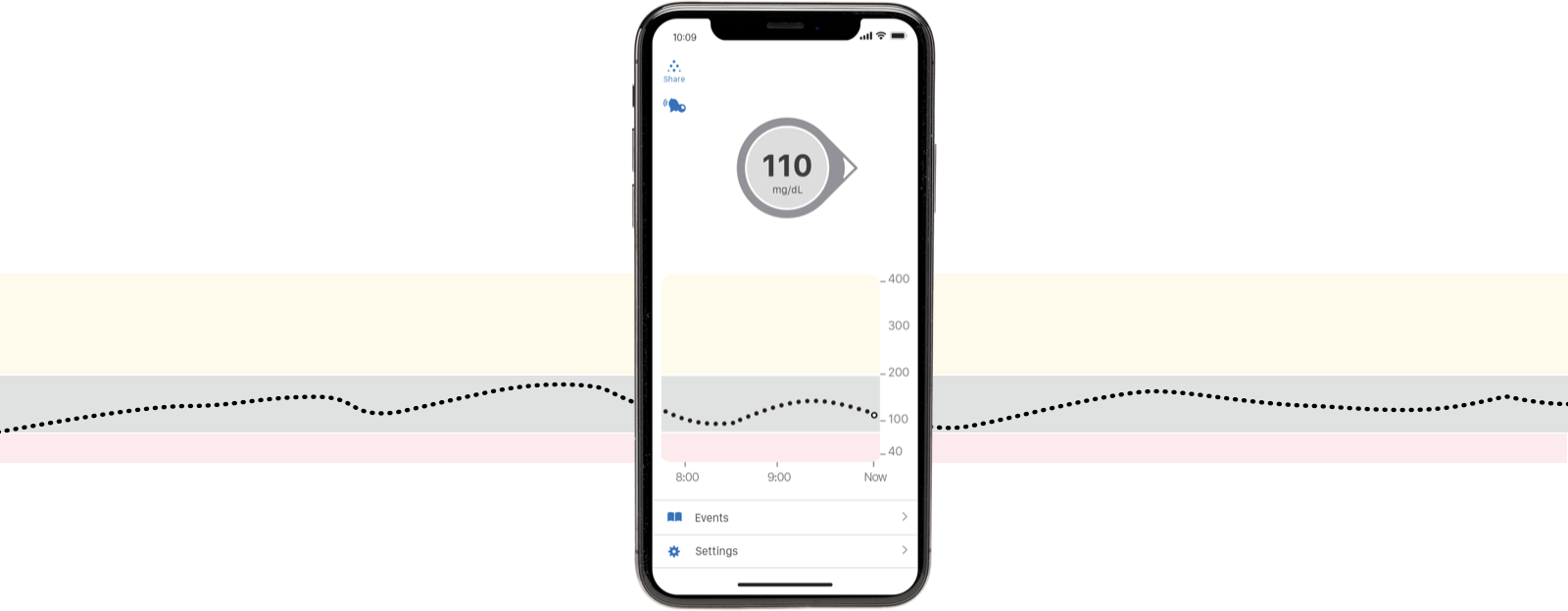
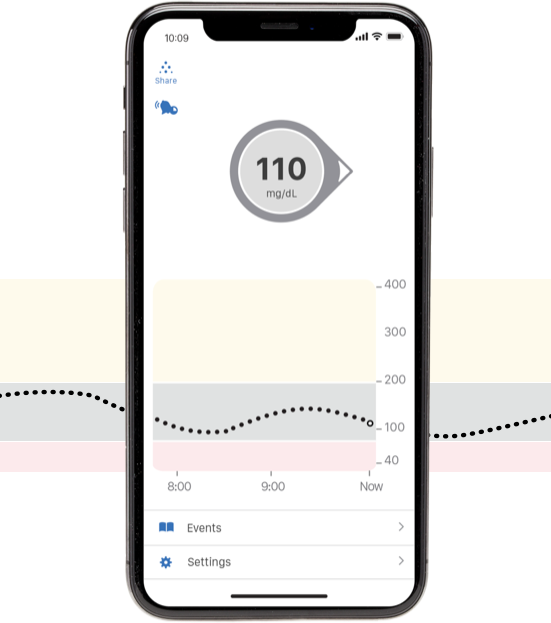
Continuous glucose monitoring (CGM) is an innovative technology and an effective tool for measuring time in range.
Learn more about CGMA Word About Access
The majority of people with insulin-treated diabetes said they believe they deserve the most cutting-edge technology available to manage their disease.1
While a lot of progress has been made to expand access to CGM, which is now covered by 99% of private insurance, Medicare and Medicaid in 40 states, there is still more to be done. In addition to education and awareness, The Global Movement for Time in Range is also pushing for increased access to CGM so more people with diabetes have the ability to measure time in range.
The founding members of The Global Movement for Time in Range are involved in various efforts to improve access to CGM and this work will continue to ensure expanded access to this life-changing diabetes management technology.
1 Dexcom, U.S. data on file, November 2020
2 Diabetic Hypoglycemia and Ketoacidosis symptoms from WebMD, 2019-2021. Individual symptoms may vary.
